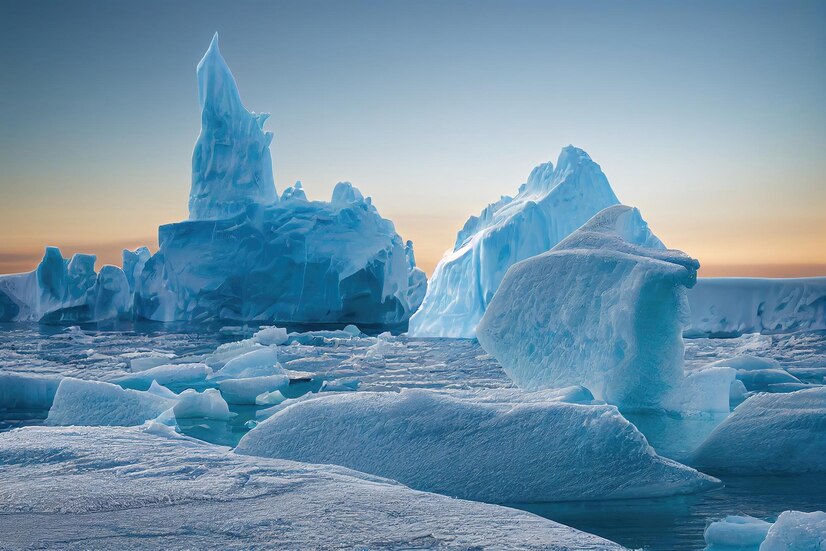Beyond Titanic: Icebergs and Their Need for the Environment

– Shivaan Darda

Icebergs may have become popular due to Titanic, but these colossal masses substantially influence global climate dynamics. Born from the frigid embrace of glaciers and ice shelves, these play a pivotal role in freshwater redistribution across oceans. Let’s discuss this further.
The Icy Impact
Icebergs, those majestic floating giants, do more than just chill in the ocean. They influence ocean currents and temperatures, which can cause significant changes in regional climates. Thus, surrounding areas experience drastic weather changes such as extreme rainfall and unexpected temperature shifts.
And there’s more to Antarctic icebergs’ influence on the environment:
- Habitat Dynamics: As icebergs melt, they release nutrients, fostering marine life hotspots and influencing biodiversity patterns.
- Ocean Chemistry: Iceberg melting alters ocean salinity and nutrient levels, impacting marine ecosystems and global carbon cycling.
- Coastal Impacts: Rising sea levels from iceberg melting accelerate coastal erosion and habitat loss, threatening ecosystems and human infrastructure.
Global Warming and Antarctic Icebergs
Glaciers and ice shelves melt faster as the earth heats up, releasing more icebergs into the Southern Ocean. Satellite data shows a significant loss of ice from Antarctic ice shelves in recent years, contributing to rising sea levels.

Saving Antarctic Icebergs from Meltdown Mayhem
It’s time to put on our superhero capes and take action. Reducing carbon emissions is key to slowing down the warming of our planet, which, in turn, can help preserve the icebergs of Antarctica. We can also support initiatives that aim to study and protect these icebergs. Educating the public about the importance of polar environments, the impacts of climate change, and the urgency of action is essential for garnering support for conservation efforts.